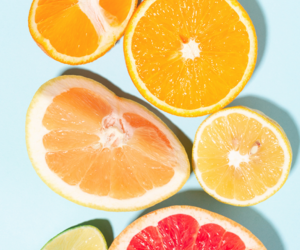Florida Citrus growers, the state of Florida and the U.S. Department of Agriculture have dedicated the last decade to researching citrus greening to help limit the spread of the disease and its impact on trees. The Florida Citrus industry has committed resources to studying citrus greening and is working with leading experts and research institutions on possible solutions. Although there is currently no cure, ongoing research will help the industry identify the best solution. The following short- and long-term solutions have shown promising initial results.
Short-Term Solutions
Advanced Nutritional Supplements
To slow the progression of citrus greening in infected trees, trace amounts of nutrients are applied to the leaves or to the roots. Providing better nutrition helps trees fight against citrus greening and enables them to continue to produce quality fruit for an extended period of time. Nutritional treatments are continuing to be extensively researched in mitigating the effects of citrus greening.

Reflective Mulch
Researchers have found that reflective metalized polyethylene film used as mulch beneath newly planted citrus trees may impair the psyllids’ (insects which spread citrus greening) ability to find and infect citrus trees. This has proven to be successful with certain vegetable crops and is continuing to be explored in preventing new citrus trees from being infected with citrus greening.
Heat Treatment
Heating HLB-infected trees in the sun by encasing them in plastic “tents” slows or diminishes the psyllid count, which may potentially prolong the productivity of trees. Steam treatment also shows promise for extending the tree’s lifespan and ability to produce fruit. With thousands of acres of citrus groves infected with greening, this method poses implementation challenges. Researchers are currently looking at ways in which this can be done on a larger scale.

Bactericides
Bactericides are a topical treatment aimed at slowing the bacteria that cause citrus greening. The bactericides do not absorb into the tree or fruit. While this is a relatively new treatment for citrus trees, it has been used for many years by pear and apple growers to fight bacterial infections on their trees. Citrus growers are hopeful that bactericides will help control greening and enhance overall tree health as longer term solutions are explored.
Long Term Solutions
Citrus Under Protective Screen (CUPS)
Researchers at the University of Florida are trialing new ways to grow citrus that offer more protection from the psyllid.1 By growing citrus in an enclosed area, under screen, the citrus remains healthy and unaffected by citrus greening. More research is necessary to determine if this can be done on a large scale and whether costs could be reduced.
Biotechnologies
Researchers are exploring how to develop a disease-resistant breed of citrus tree which is not susceptible to greening or HLB and will not become diseased. As a result, the tree will remain healthy and continue to produce quality citrus fruit. This research includes traditional cross-breeding and biotechnology.
For example, research is underway exploring genetic modification of citrus trees with the addition of a gene from spinach, which does not change the fruit or juice. This option is showing promise in creating a more HLB-tolerant citrus tree and extensive research is being conducted. As recently as 2015, researchers found another promising alternative by isolating a gene from the mustard family2 The resulting trees showed enhanced resistance to greening even after three years of being planted alongside infected trees. A solution for greening still remains years away while extensive research continues.

References
- http://www.crec.ifas.ufl.edu/extension/trade_journals/2016/2016_November_thermo.pdf
- Dutt, M., Barthe, G., Irey, M., & Grosser, J. (2015). Transgenic Citrus Expressing an Arabidopsis NPR1 Gene Exhibit Enhanced Resistance against Huanglongbing (HLB; Citrus Greening). Retrieved March 09, 2017, from http://journals.plos.org/plosone/article?id=10.1371%2Fjournal.pone.0137134
